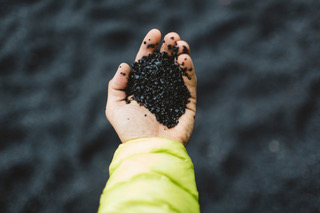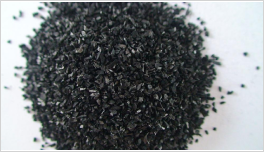Activated Carbon
Activated carbon (often referred to as AC or charcoal) is like a sponge for water—it soaks up a wide range of contaminants.
What Is Activated Carbon?
Imagine tiny particles with lots of nooks and crannies. That’s activated carbon! It’s made from various sources like coconut shells, wood, or coal. The magic happens during activation: high temperatures and chemicals create those pores, making it super absorbent.
How Does It Work?
Activated carbon has an extensive surface area due to its porous structure. When water flows through it, the carbon traps impurities like:
- Organic Compounds: Think pesticides, industrial chemicals, and even funky tastes.
- Chlorine: Yep, the stuff that makes your tap water smell like a swimming pool.
- Odors: Say goodbye to that weird smell! Disinfection Byproducts: These are the leftovers from treating water with chlorine.
Where Is It Used?
- Drinking Water Treatment: AC is a superhero in water treatment plants. It removes the bad stuff, leaving you with cleaner, tastier water.
- Home Filters: Ever used a water pitcher with a carbon filter? Yep, that’s activated carbon at work!
Why Is It Awesome?
- Effective: It grabs contaminants like a pro—up to 99.9% removal efficiency!
- Taste Improvement: No more “bleh” water. Odor Reduction: Goodbye, weird smells.
- Eco-Friendly: It’s natural and doesn’t harm the environment.
So, next time you take a sip of water, give a nod to activated carbon—it’s the unsung hero in your glass! 🥤 If you want to dive deeper or chat about anything else, feel free to ask! 😊👍






